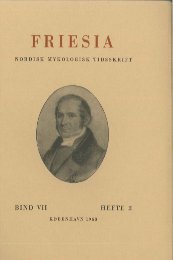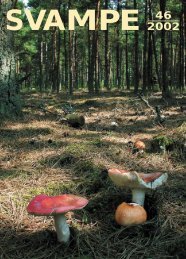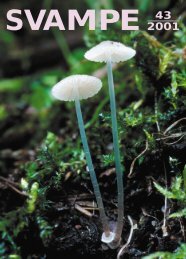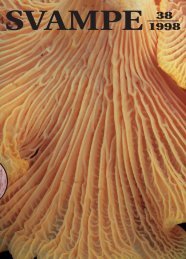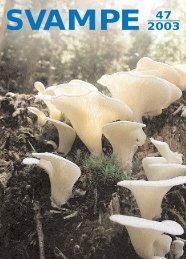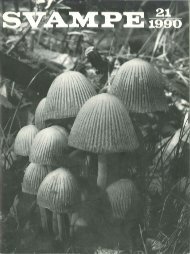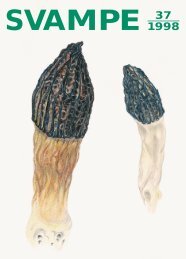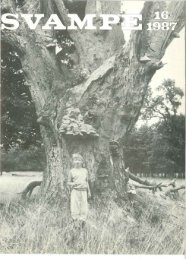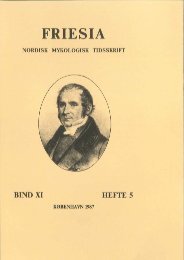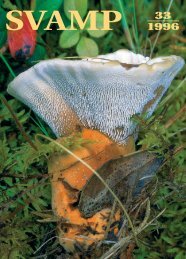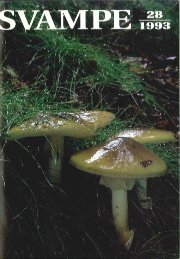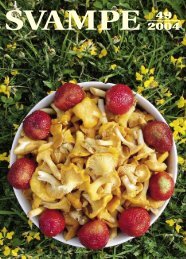You also want an ePaper? Increase the reach of your titles
YUMPU automatically turns print PDFs into web optimized ePapers that Google loves.
- 180 -<br />
F ig. 29. Psalliota eæcellen s,<br />
F igur es executed from natur e ( 1:2).<br />
It is probable t hat P . exeellene has pr eviously been referred to<br />
P . arvensis sensu lat. But all the whit e species from coniferous woods<br />
in the Arvensis group more easily turn yellow and become a deeper<br />
yellow on pressure and have much smaller spores, thus also t he lar ge<br />
P. macrocarpa. Owing to its size, its slender stem, and its occurrence<br />
under Picea it may be mistaken for a light-coloured P. augusta Fr.<br />
(see fi g. 29) ; and experienced mycologists like R i c k e n and many<br />
other able investigators, particularly in Central Europe, have indeed<br />
r eferred it to that species, probably es pecially owin g t o the somewhat<br />
unsatisfactory description of t he latter in F r i e s, Hym. E ur.<br />
But F r i e s' s good figures of P. augusta in At l. och gift. Svamp., and<br />
his ear lier description in Mon. H ym. disp el all doubt as to how this<br />
should be interpreted.<br />
The large, at first snow-white P. excellens, with the concolorous<br />
scales on the cap and stem catches the eye far away in the dark fir<br />
wood and at once renders it re cog nis ab le, and t he micro scopic<br />
examination after one's r eturn home c1inches t he matter . On the



